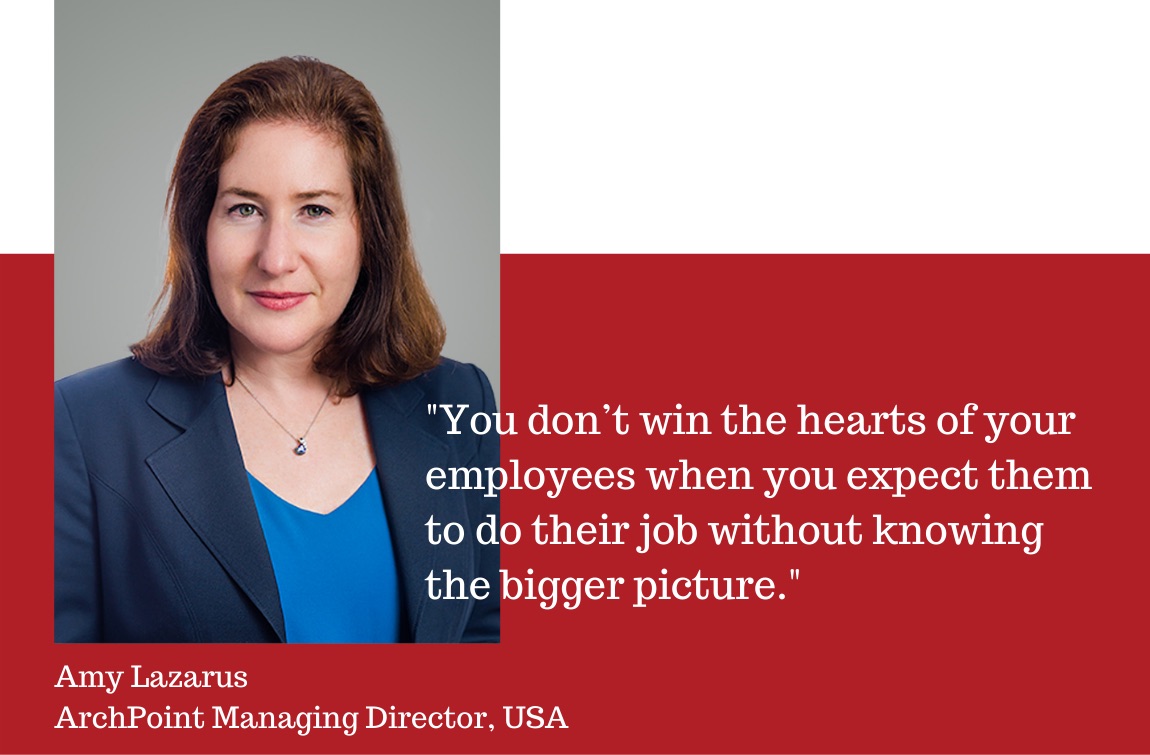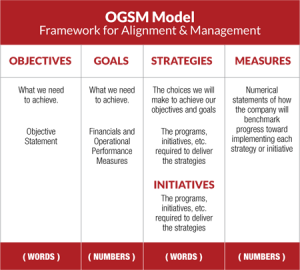
Strategic Planning Guide 2021: Everything you need to know about Strategic Planning
To be successful, organizations must be proactive and disciplined in their approach to strategic planning. A clear strategic plan that is well-communicated to the organization drives execution, performance and financial results. Simply put—strategic planning is the organization’s guide for the future.
If strategy is the destination, a strategic plan is the map.
What is Strategic Planning?
Some call it “goal setting.” Others call it “business planning.” Labels for strategic planning are as varied as there are types of organizations. Regardless of what it’s called, we find most companies undertake some form of strategy work. Leaders assemble annually to discuss the good and the bad and decide organizationally what needs to be changed, stopped or started. They set goals and create a vision for the future. But the work shouldn’t stop here.
Good planning requires going a step further by actually putting a plan in place to deliver the future. Your vision may be crystal clear in your mind but for your people, that vision must be translated into an actionable, executable plan so they know how they contribute to making that vision a reality.
Growth and progress do not come to those who do not create plans to achieve growth and progress.
What is a Strategic Plan?

Most companies have a strategy, even if it is short term. But most companies do not have an executable strategic plan. If there’s one thing ArchPoint believes with passion, it’s that organizations must have a clear vision of their desired future and the steps to achieve that future. Otherwise, they risk churning at the same performance level or worse, declining.
The benefits of Strategic Planning
Strategic planning brings focus among competing priorities and aligns organizations. It brings people together to discuss and wrestle with what and how to prioritize, allows for the opportunity to consider solutions to business issues and creates a unified vision for the company to communicate and share.
“You can survive without strategic planning, but you miss cohesion and discretionary effort. You don’t win the hearts of your employees when you expect them to do their job without knowing the bigger picture. Without being fully engaged, they will treat work as a job and not a career – a means to earn money versus a means to build something collectively,” says Amy Lazarus, ArchPoint Managing Director, USA.

If you asked your employees what your top 5 priorities are, could they tell you?
Why OGSM is the best strategic planning framework?
OGSM is a strategic planning framework popularized in the late 1950s. It is a concise, one-page format that defines the organization’s strategic plan as an Objective, Goals, Strategies and Measures. At ArchPoint Consulting, we have used this tool both as practitioners in Fortune 500 companies and as consultants over the last 25 years. We have found it to be the best tool to not only set a clear plan for the future but to align the organization around those priorities.
Where do Strategic Plans go wrong?
First, a strategic plan must include these five main elements in order to be successful.
01.
A well-thought-out statement of what the company wants to be in the next 3 – 5 years.
02.
A set of financial goals that keep the organization focused and grounded in reality.
03.
Strategic choices that are prioritized to achieve the future vision of the company.
04.
Applicable measures for each of the strategic choices to be able to gauge success.
05.
Detailed action plans for the next 6 – 12 months that define owners, activities & deadlines.
- The corporate strategy is not understood by employees or there is lack of consistent communication around the plan.
- People don’t know how to contribute because action plans are not created to connect the plan to daily activity.
- People aren’t empowered or held accountable for the plan’s progress.
- The plan is unrealistic or overwhelms the organization’s capabilities and resources.
- Lack of alignment and leadership buy-in.
- There is no management routine or reporting of progress.
Why Strategic Planning is important
Given that a strategic plan is the map by which an organization achieves its goals, planning is crucial. Daily priorities often overtake long-term initiatives – and these longer-term, important items can get lost.
Planning is also important to prevent an organization from meandering aimlessly toward the future. You may reach your desired destination, but how long will it take? And how much time and energy will have been wasted trying to manage and work through the ambiguity? Strategic planning is important because it harmonizes roles, functions and activities so companies can efficiently move in the same direction to reach their desired destination.
Your employees need strategic planning. People are required to bring strategy to life daily. Your people must know the strategy, understand the plan to reach it and know how their work contributes. Leaders can take for granted that because they know the strategy, the organization will inherently know how to deliver the strategy.
Even if leaders share and discuss the strategy, it doesn’t mean people are aligned.
Benefits of Strategic Planning
- Maintain focus on priorities. By integrating the strategic work into the daily activities, the strategic priorities won’t feel like an additional burden to the organization. The goal is to weave the two together.
- Enhance accountability. Creating ownership of the strategic plan throughout the organization is a win-win for the company’s leadership and its employees.
- Provide a means to track and measure performance. A strategic plan should connect measures of the organization to the teams responsible for carrying out the initiatives.
- Drive collaboration and discussion. The strategic plan is not set in stone but should be the foundation for strategic dialogue to stay competitive with changing external and internal conditions.
- Set direction and align your team. Good strategic plans bring the organization together and drive every level toward a common objective.
- Increase execution of long-term strategic growth. The first step is creating the plan but ultimately a well laid plan with detailed workplans leads to future growth and competitiveness of the organization.
What is a Strategy Map?
Strategy maps are tools developed in addition to strategic plans (most commonly used with the Balanced Scorecard framework) that illustrate how employees’ jobs are linked to overall objectives and goals. They show cause-and-effect relationships between strategic plan initiatives and desired outcomes – how a focus on improved customer service could positively impact product quality and customer retention, for example. Strategy maps also show how organizations convert resources and effort towards strategic initiatives, including intangible resources like powerful brand recognition into tangible outcomes like increased revenue.
Strategy maps have four key perspectives:
- Finance Perspective
- Customer Perspective
- Internal Processes Perspective
- People/Learning & Growth Perspective
They are built from the top-down, beginning with a company mission statement and core values to develop a strategic vision and goals. Leaders should start with the desired outcome and then map the paths to achieve the goal.

What is Strategic Management?
For a strategic plan to remain fresh and the organization agile, leaders must make strategy a key part of how they manage. By doing this, you maintain a balance between executing the plan and the inevitable changes that will need to be made. A strategic plan is not static, but something an organization can and should adjust based on changes in the marketplace and within the company. It is a benchmark that allows the company to self-assess and then adjust the plan to ensure its success.
Course corrections will be necessary, and so will a regular review of the strategic plan and progress. Companies that are truly successful in strategy implement a consistent management routine and review plans on at least a quarterly basis. Having a plan doesn’t remove your ability to adjust; instead it grounds the organization, and helps you pivot in the right direction.
What makes Strategic Planning successful?
Think of the company who is the most successful when it comes to strategy. What makes them the best? “Employee buy-in and involvement,” says Lazarus. “One client in particular is a great example – they started our method of strategic planning, OGSM, with the leadership team. Once they gained buy-in at that level, they rolled out the planning process to other levels and divisions. They also created a multi-year plan ensuring the strategic priorities and choices were understood at the executive level before sharing it further. It wasn’t forced, it evolved year over year as the organization acclimated to the structure.”
For Stephen Peele, ArchPoint Senior Partner for Strategy, what successful companies do differently is focus. “Companies that are successful concentrate on the key priorities – what’s really going to move the needle. They also have the ability to reconcile priorities across the business and utilize a dashboard to keep people focused.” Successful companies also walk the talk and execute their strategy in alignment with their commitments. Through process discipline and a sound management routine, what is agreed upon in a planning session is followed through to execution. Nothing motivates excellence more than delivering on commitments.

The Strategic Planning Process
The strategic framework that we have found to work best in developing, aligning and deploying strategy is OGSM (Objectives, Goals, Strategy & Metrics). OGSM provides a direct line of sight to the overarching business goals and strategies of the enterprise. It turns something incredibly complex into simple words, numbers and actions that can easily be communicated throughout the organization.
There are four main steps to writing an OGSM:
- Assess the current state of the business. An objective, honest assessment of where the organization is today is crucial to the success of strategic planning efforts.
- Define the future state of the business. Once a clear picture of where the business is today is established, the organization’s definition of future success should be agreed upon by the leadership team.
- Develop and prioritize the work. Once current state and desired future state are defined, leadership directs its efforts to the critical choices needed to deliver the future state through a strategic plan.
- Align, execute and manage the strategic plan. The plan must be indoctrinated into the daily activities of an organization for it to be successful. Strategic activity management is also necessary to ensure alignment endures.

In ArchPoint’s OGSM Whitepaper we clearly outline the detailed process for developing an OGSM. Check out other alternatives for strategic frameworks.
Regardless of the framework you choose, every strategic plan should answer these questions.

When should Strategic Planning be done?
- The company is not getting desired results or performance is poor
- Mergers, acquisitions or restructures
- Continued low engagement, morale or toxic culture
- Market, industry or competitor changes
- Fundamental shift in direction is desired or major new endeavor planned
- Lack of company, leadership or team alignment
Is your organization on track for strategic success?
- Is your strategy in line with how your organization plans to grow? These two elements must not compete – work done in support of strategic execution must also support the means in which the company experiences growth.
- Are your financial goals connected to your strategy? If one of your financial goals is to increase market share, there should be strategic work devoted toward this goal.
- Are your priorities reasonable? Often resources committed to one priority are the same that are needed for another, so if your organization cannot logistically achieve the priorities currently set, you may need to scale back and reconsider your choices.
- Do you currently have or plan to build the capabilities needed to achieve your strategy? You cannot become the innovation leader in your market if you do not have the skill sets and resources required. Acquiring and/or building capabilities must be considered if the strategy requires it – or the strategy may need to be altered.
- Do you have a mechanism for maintaining focus and tracking strategy execution? Your people need a way to keep tasks on track – and they need one person assigned to oversight. Both a means to track strategic activity and a leader who manages it is fundamental to success.
Strategic Planning Examples: Popular Frameworks
An abundance of strategic planning frameworks exists. Depending on leadership preference, company culture and desired outcome, leaders can consider these ten popular models below.
- 7S Model (Strategy, Structure, Systems, Staff, Style, Skills, Shared Values)
- Ansoff Matrix
- Balanced Scorecard
- Blue Ocean
- Hoshin Kanri
- Kotter Change Model
- OGSM (Objective, Goals, Strategies and Measures)
- OKRs (Objectives and Key Results)
- VMOST (Vision, Mission, Objectives, Strategy, Tactics)
- VRIN Resource Model (Valuable, Rare, Inimitable, Non-Substitutable)

Before you embark on a strategic planning process, be sure you have the following:
- Alignment to the model
- Buy-in from leadership on purpose and goals of strategic planning
- Agreeing to commit resources to achieve the plan
- External market analysis
- Internal capabilities and gap analysis
- Commitment to potential change and solid communication plan to support the strategy
Strategy is hard and requires leaders to make difficult decisions on what the business will and won’t do. An objective point-of-view is extremely valuable in helping making these decisions, aligning the organization and stewarding the process. Our clients turn to ArchPoint Consulting because we’re experts in strategy development, deployment and execution.
